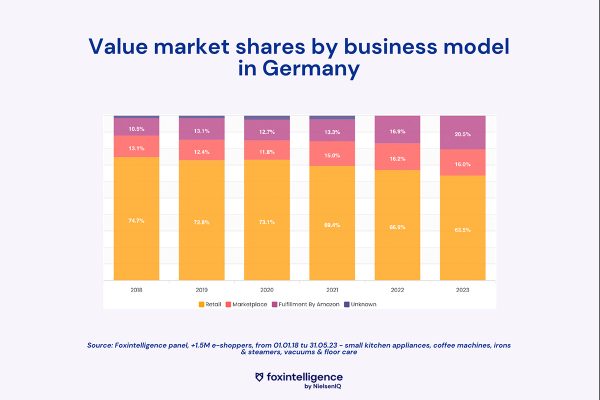How will AI, AR, and VR technology innovations in 2024 impact online marketplaces and the wider ecommerce space? Ed Turner, CIO at Asendia UK shares his views:
The online retail landscape is entering a new phase – one where virtual try-on services, hyper-personalisation and data-driven relationships will become the norm. Transformation will be driven by AI-driven analytics (artificial intelligence) alongside AR (Augmented Reality) and VR (Virtual Reality) tools. These will be used to both enhance consumer-facing aspects of shopping online, but also to drive operational benefits for retailers themselves.
According to IDC, AI technology will feature in 90% of new enterprise apps by 2025, with AR/VR spending reaching $72 billion by 2024. This signals a significant rise in digitally-enhanced services, urging marketplace vendors to adapt or risk falling behind.
AI for the journey
For sellers on e-commerce marketplaces, the integration of AI technologies within logistics operations translates into substantial benefits. Firstly, AI-driven demand forecasting empowers sellers to optimise inventory levels and reduce stockouts. Consequently, sellers can optimise their supply chains, reduce storage costs, and allocate resources more efficiently, resulting in improved profit margins.
Secondly, AI-powered route optimisation directly impacts shipping costs for sellers. By leveraging algorithms that consider real-time data such as traffic conditions, disrupted flight routes and delivery destinations, e-commerce sellers can ensure cost-effective and timely deliveries. This efficiency not only enhances the overall customer experience but also allows sellers to offer competitive shipping rates, attracting more customers and fostering loyalty.
Moreover, the automation facilitated by AI in logistics contributes to streamlined order fulfilment processes. Automated sorting systems, robotic picking and labelling, and autonomous vehicles can expedite the movement of goods, reducing the time between order placement and final delivery. This increased efficiency not only positively influences customer satisfaction but also allows sellers to scale their operations without proportionally scaling labour costs.
All this will help maximise profitability but also contributes to sustainability. If you can optimise delivery routes, and tighten up returns management, you can reduce air and road mileage, cut fuel consumption and scale back carbon footprint.
Mixed reality has landed
The AR/VR headset user base has so far been gamer-focused, but experts are predicting everyday use for mobile computing, entertainment and shopping is on the horizon. The launch this February of Apple Vision Pro – Apple’s mixed reality headset – shows what is possible.
Experts are suggesting that the Vision Pro’s advanced eye tracking and spatial mapping capabilities allow for highly customised experiences. This opens the possibility of online stores adapting to individual preferences, highlighting relevant products, and offering real-time recommendations.
The future of AR and VR in e-commerce is about creating immersive, interactive, and personalised shopping experiences. As technology matures and becomes more accessible, we can expect to see AR and VR integrated seamlessly into online shopping journeys, offering new levels of convenience and engagement. Ignore it at your peril!
Product visualisation and virtual try-on
Retail brands are already integrating AR and VR into their online offer. Ikea got in early with its IKEA Place app to help customers visualise sofas and bookcases in their real-world environment. Brands are grasping the opportunity of AR to overlay detailed product information, such as specifications, user reviews, and pricing, directly onto on e-commerce websites.
Virtual try-on experiences for fashion and accessories are coming to the fore too. Thanks to AR and VR apps shoppers can see how clothing, eyewear, jewellery, and cosmetics look on themselves without physically trying them on. Noteworthy instances include recent launches of virtual try-on tools by industry giant Amazon and luxury menswear retailer Mr. Porter.
Brands can create interactive AR demos to showcase the features and functions of their products. For instance, an electronics manufacturer can offer AR demonstrations of a smartphone’s camera capabilities. And AR can provide personalised recommendations and styling advice based on a customer’s preferences and past interactions. This enhances the shopping experience and encourages upselling.
Improved decision-making means fewer returns
AR helps customers make more informed decisions by providing additional context and information. This reduces uncertainty and increases confidence in online purchases. Returns could be reduced – something online merchants are very keen to achieve.
While the tsunami of tech innovation coming our way is exciting, I’m making a call for retaining a level of humanity, after all, the personal touch does require real people somewhere along the value chain. Although speed and convenience are important, people want something to believe in. Authenticity remains a crucial factor influencing consumer behaviour. Asendia’s survey reveals 70% of UK shoppers are willing to pay more for authentic brands, citing factors like delivering on promises, supply chain transparency, and sustainability commitments.
If you can embrace the right technologies to move with the times, while retaining a human touch and a sense of purpose and authenticity, you’re in for the long game.









